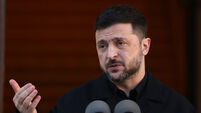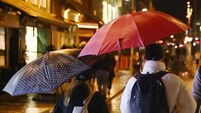22 die in Afghanistan attack
Hundreds of rebels in a convoy of trucks attacked a police headquarters in south-east Afghanistan today, triggering a gun battle that killed 22 people, officials said. It was one of the largest shows of anti-government force in over a year.
The fierce fighting in Paktika province was the latest in a wave of violence that has underscored just how unstable Afghanistan still is after the Taliban was toppled in late 2001.
The assault began shortly before midnight yesterday when about 400 guerrillas drove across the border from Pakistan and attacked the police headquarters in the province’s Barmal district, 125 miles south-east of Kabul, said provincial Governor Mohammed Ali Jalali. It was not clear how he knew the men came from Pakistan.
Firing rockets, heavy machine guns and grenades, the attackers easily took over the office. About 15 to 20 Afghan police officers were in the compound at the time and seven of them – including the district police chief – were killed, Jalali said. The rest, realising they could put up little resistance, fled.
Jalali said between 15 to 20 insurgents were also killed. Provincial police chief Daulat Khan said the attackers retreated with the bodies.
“These police died defending themselves,” Jalali said from the provincial capital, Sharan. “The attackers, they were a very big group.”
The insurgents held the police station until dawn today before destroying the building and fleeing to Pakistan, five miles away, Jalali said.
It was unclear why the attackers retreated, but Jalali said they likely did so because by daylight, word of the attack would have been passed on to the US-led coalition, against which they would be little match.
Coalition forces have massive air power at their disposal and routinely use it when insurgent positions are identified.
Previous battles between insurgents and government forces backed by the US-led coalition have rarely involved more than 80 guerrilla fighters. Anti-government forces usually move around in small groups on foot.
“For a large number of people in vehicles to cross the border in daylight requires some guts as well as some co-ordination,” a senior government official said.
He said the issue would be discussed when Pakistani foreign minister Khursheed Kasuri visits Kabul on Thursday, and Afghan authorities would press Pakistan to do more to police its side of the border.
Jalali said the insurgents responsible for the attack included Taliban and fighters loyal to Gulbuddin Hekmatyar, a former prime minister who heads Hezb-e-Islami, a faction which has called for attacks against foreigners in Afghanistan. He also blamed Pakistan’s intelligence service for playing a role in organising the assault.
Pakistan abandoned its support for the Taliban following the September 11 attacks in the United States. The nation has since become a key ally of the United States in its war on terror, arresting more than 500 suspected al Qaida operatives.
However, the deeply conservative tribal belt that runs along Pakistan’s border with Afghanistan is believed to be a safe haven for fleeing Taliban, who share both ethnic and religious links to Pakistani tribesmen.
Thousands of Pakistani soldiers have been deployed along the porous and rugged border. But tribesmen in the area openly say they would protect fleeing Taliban.
On Wednesday, 64 people were killed in various attacks around the country. The violence included a bus bombing that killed 15 and a battle between feuding warlords, both of whom were loyal to the Afghan government.
The top UN envoy for Afghanistan, Lakhdar Brahimi, has asked the Security Council to expand the 5,000-strong Nato-led peacekeeping force to ensure security outside the capital ahead of national elections due in June 2004.
One of the keys to Afghanistan restoring stability is believed to be the strengthening of its national army, which now numbers just 5,000 soldiers. The government wants it to have 70,000 troops over the next several years.
UN spokesman David Singh said that the army opened its first recruiting centre in the east of the country. Other recruiting centres are due to open in at least five other regions, Singh said.













